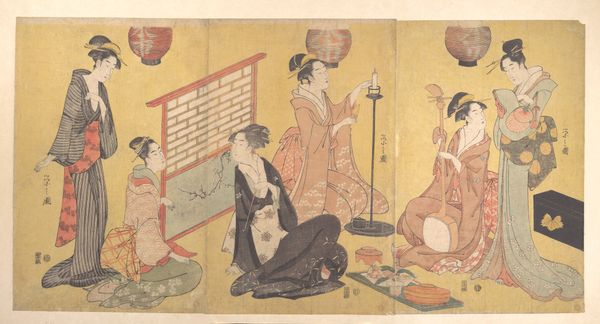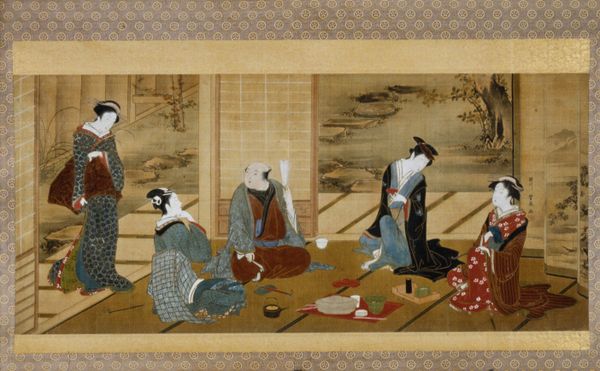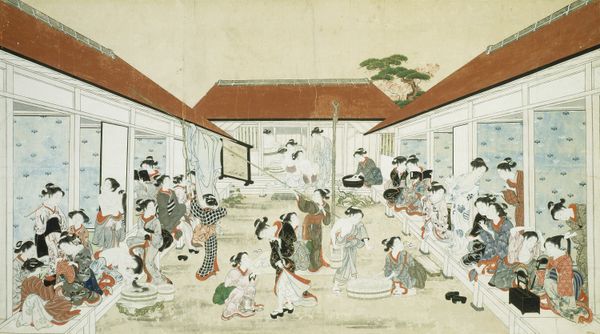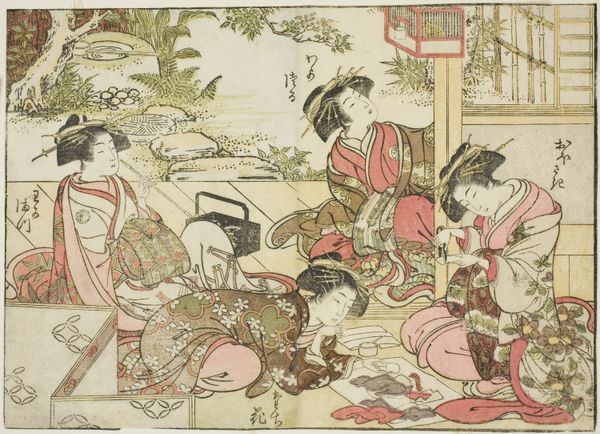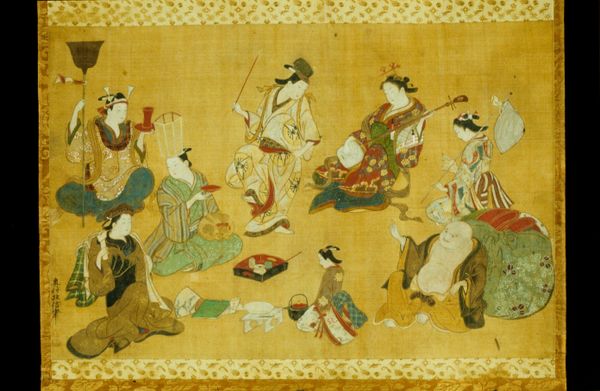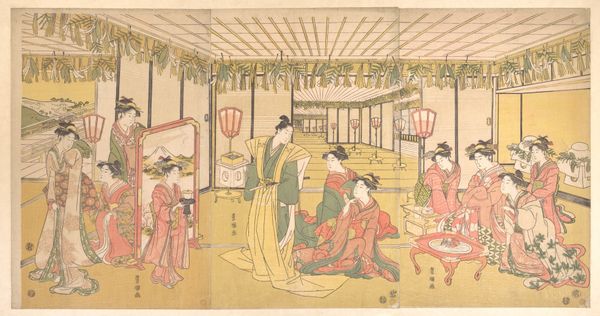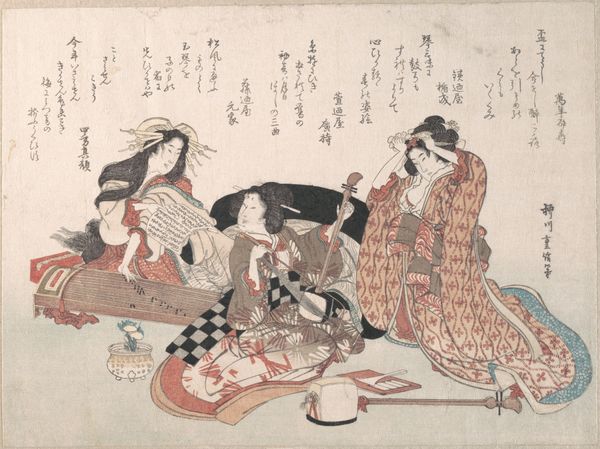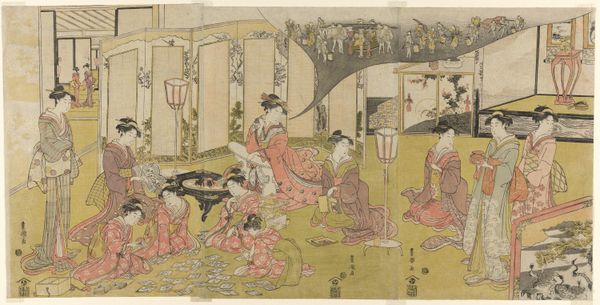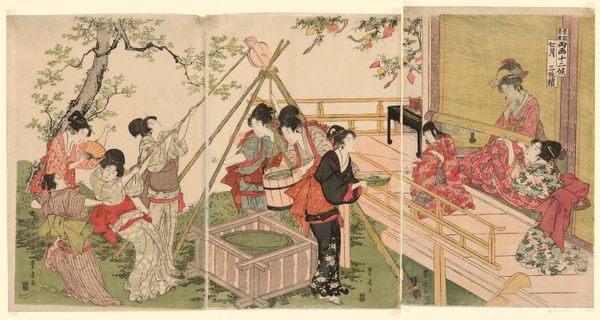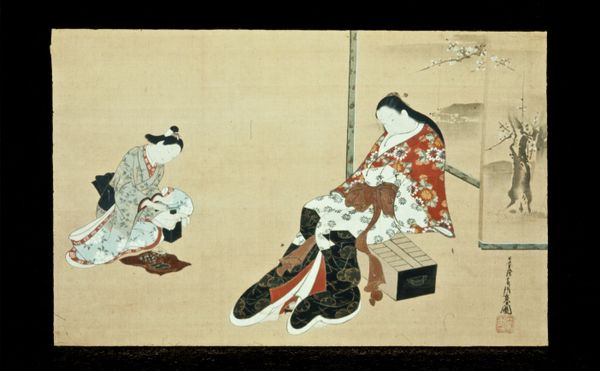
ink, woodblock-print
#
landscape
#
ukiyo-e
#
figuration
#
ink
#
woodblock-print
#
genre-painting
Dimensions: 19 9/16 × 29 1/8 in. (49.69 × 73.98 cm) (image)
Copyright: Public Domain
Utagawa Toyohiro created this beautiful, undated painting, “Summer Party on the Bank of the Kamo River,” likely during the Edo period. This work offers a glimpse into the lives of women in Japanese society and how they navigated the complex social expectations of their time. These women, possibly courtesans or geishas, are gathered in what seems to be a private, intimate setting. Here, we can see the women are engaging in leisurely activities such as playing music and sharing food. During the Edo period, women's roles were very restricted, yet courtesans and geishas often enjoyed a certain degree of freedom and influence. They were admired for their skills in the arts and their ability to engage in witty conversation. Despite their elevated status, these women were still bound by social constraints, their lives dictated by the pleasure of men and the demands of their profession. In this painting, Toyohiro captures a moment of respite, revealing the nuances of pleasure and constraint in the lives of these women. This work invites us to reflect on the complexities of gender, class, and identity in 19th century Japan.
Comments
minneapolisinstituteofart almost 2 years ago
⋮
During the summer months, restaurants along the west bank of the Kamo River in Kyoto put platforms over the river so guests can enjoy their evening meals outdoors. This spectacle became a subject for artists of the ukiyo-e and Shijō schools as a representation of the summer season. Here, the smoking tray in front of the young man provides the name of the restaurant, Shijōya. Two women are leaving the scene on the left while he is dining with a young woman sitting opposite of him. They are entertained by two musicians with shamisen (three-stringed instrument) and three young girls wearing bright red aprons are serving them. This painting was chosen as model for a woodblock-printed triptych published in 1801 that represents the Sixth Month and is part of a series depicting the twelve months through designs by Toyohiro and his fellow ukiyo-e artist Toyokuni.
Join the conversation
Join millions of artists and users on Artera today and experience the ultimate creative platform.

